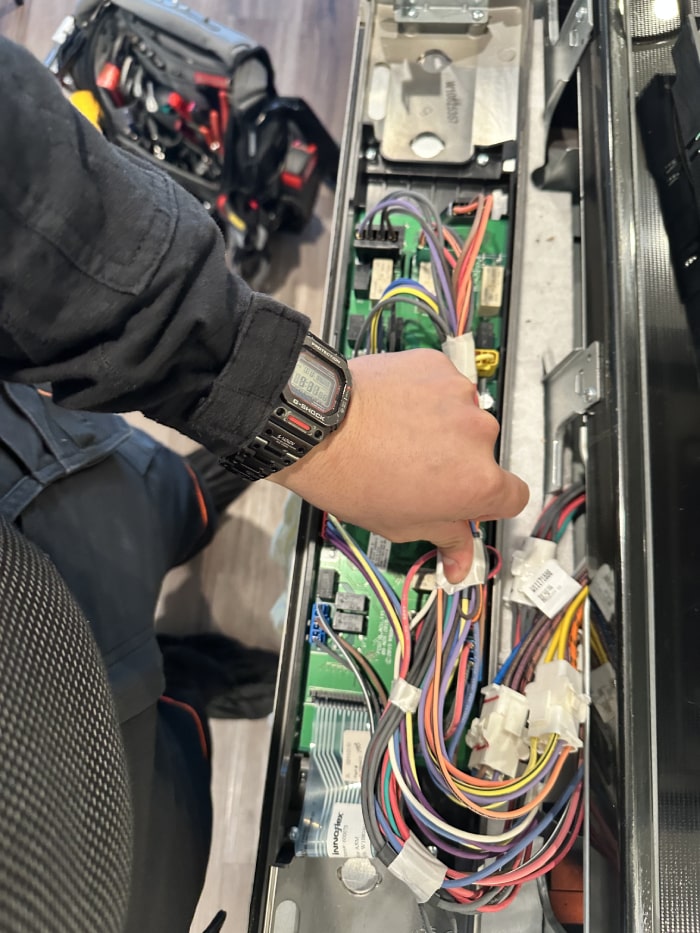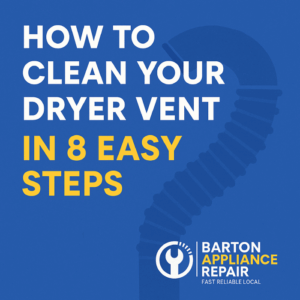Working with your household appliances needs a good understanding of safety guidelines and hazard awareness. Most of us don’t really think about the safe measures and simply jump into the handy work. Whether you are working with a small or a big appliance, safety is always needed. There is a very thin line between a successful repair and falling into a dangerous situation. So, to make sure you don’t trip and fall into a dangerous situation, we are here with a guide that will tell you all about appliance repair safety and the importance of hazard signs.
Time to actually pay attention to those safety warnings!
Why Should You Care About Safety Warnings and Hazard Signs?
Safety warnings and hazard signs are actually your first line of defence in helping you avoid accidents during appliance repairs. In each small or big appliance, there are visual signs in red, and yellow to warn you of the potential dangers. With these indicators, these signs also tell you about the necessary precautions you need to take through standardized symbols and colours.
Some of the most common hazard signs are electrical shock warnings, hot surface signs, chemical exposure and others. To give you a clear image, a yellow triangle with a lightning bolt means there is an electrical hazard. There are many other signs like this, and it is important for you to understand them if you want to repair your appliances safely.
Related: Whirlpool Error Codes List: What Every Homeowner Needs to Know
Basic Safety Protocols for Appliance Repair
Power Disconnection and Verification
Before you start appliance repair, make sure you have disconnected from its power supply. This is one of the important steps in an appliance repair process. A lot of us forget about this and move ahead with the repairs which actually increases the chances of accidents. It is not a simple turn-off-the-switch step, rather it has a proper process:
- Unplug the device from the electrical outlet.
- Turn off its circuit breaker.
- Use a voltage tester to confirm that the power is disconnected.
- Wait for the capacitor to discharge if you are working with an applicable appliance.
Workspace Preparation
You would be surprised how many times a clean workspace has helped professionals avoid accidents. A messy workspace can distract you from the repair work. For example, you are looking for a specific tool in the mess while holding a wire. This can end up in you getting an electrical shock because of divided attention. To avoid such situations, make sure your workspace is:
- Well-lit so that you can see everything around you.
- Clean and organized so that you don’t trip yourself or fall on anything.
- Proper ventilation
- Free from moisture and water.
- Stocked with some safety equipment, in case something happens.
PPE
Wearing protective clothes during appliance repairs can help you a lot. You might not realise it, but with their help, you can easily avoid accidents from happening. A good PPE includes:
- Insulated gloves for electrical protection.
- Safety glasses to guard against chemicals and other things.
- Non-slip footwear.
- Protective clothing that fits you properly.
- Breathing device when dealing with dust or chemicals.
Related: Industrial Trash Compactor vs. Trash Compactor for Kitchen: Which One Do You Need?
Common Hazards in Appliance Repair
Electrical Hazards
Electrical hazards are not something to be taken lightly. An electric shock can end up in a serious injury or even death. That’s why we suggest you take precautions. Below are some situations where you should be careful:
- When you are working with exposed wiring.
- Checking for damaged insulation.
- Being aware of your surroundings, especially water.
- Understand the voltage requirements.
- Identify the signs of electrical damage.
Mechanical Hazards
Sometimes simply moving parts in appliances can also cause some serious injuries. Some of the mechanical hazards include:
- Sharp edges and corners
- Rotating parts
- Spring-loaded mechanisms
- Heavy parts that can fall
- Pinch points and other crushing hazards
Chemical Hazards
You might not know but a lot of your home appliances have chemicals in them. You need to be very careful while handling them. There are chemicals like:
- Refrigerants in cooling systems.
- Cleaning solutions and solvents.
- Lubricants and oils.
- Battery acids.
- Insulation materials.
Related: The Importance of a Clean Dishwasher Filter and How to Clean Dishwasher Filter in Minutes
DIY Repairs or Professional Service – Which One to Choose?
It is super easy to handle the small repairs at home. But some appliance repairs don’t look like a piece of cake. If that’s the case, then you should call for a professional. You should consider these when deciding:
Call a Professional When:
- Repairs need specialised tools.
- There are complicated electrical systems.
- You are dealing with gas-related appliance repairs.
- Your appliance is showing multiple or unknown issues.
- You have warranty-covered repairs.
Safe to go Ahead with DIY Repairs:
For easy and manageable DIY repairs:
- Read up on the specific appliance and model in detail.
- Get proper tools and safety equipment.
- Follow the manufacturer’s guidelines strictly.
- Document the repair process.
- Know when to stop if the repair becomes too complex.
Emergency Response
Accidents can happen even though you have been careful, were wearing PPE and have taken all the precautions. In case any emergency comes up, you should be capable of handling it. To be able to do that:
- Keep a first aid kit handy.
- Have emergency contact numbers readily available.
- Know the location of fire extinguishers.
- Understand the basic emergency response procedures.
- Maintain clear access to emergency exits.
Best Practices for Ongoing Safety
Regular Maintenance
Preventative maintenance can reduce the possibilities of dangerous situations! Make sure to:
- Schedule regular inspections.
- Clean appliances according to the manufacturer’s instructions.
- Replace worn parts before they fail.
- Document the maintenance activities.
- Keep an eye on the performance of your appliances.
Related: Dryer Repair Made Simple: Resolving GE Dryer Loud Thump During Drum Reversal
Documentation and Learning
Recording and keeping a record of all the repairs can help you understand your appliances and provide better repairs.
- Keep repair manuals accessible.
- Document all repair products.
- Stay updated on safety guidelines.
- You can also learn from your past experiences.
Conclusion
A safe appliance repair needs to be done with utmost care. Those who are involved in repairing should have a better understanding of the safety warnings and hazard signs. This will help you become aware of the different hazards that home appliances have. By following these safety guidelines, you will be completing the repair process safely along with better outcomes. Remember that safety is always on top of the list of priorities. So, in case of a situation where you are unsure whether or not a DIY repair is safe, call a technician. You can reach out to Barton Appliance Repair and get the best service.





